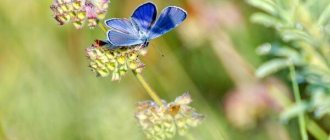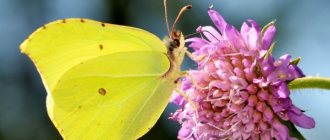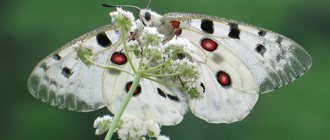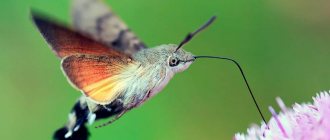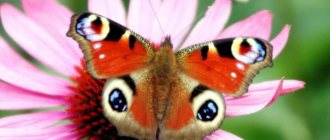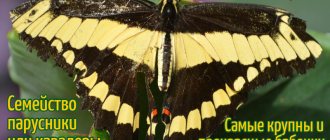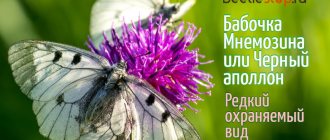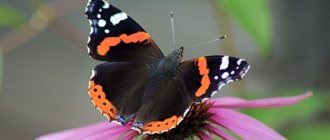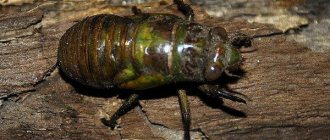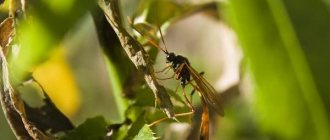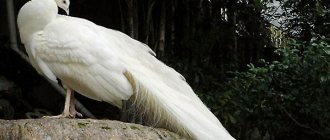Nature has many creatures of amazing beauty and grace. One of them is a bright peacock butterfly. It is easy to distinguish it from other representatives of the order Lepidoptera by its characteristic pattern. On the wings there are four blue eyes with a dark border. The insect lives throughout Eurasia and can easily be found in early spring in a garden or park. The butterfly feeds on plant nectar and gives preference to buddleia, a shrub with white or lilac fragrant flowers.
Features of biology
Aberration semi-ocellata
Develops in one generation in the steppe and forest-steppe zones; in Crimea and Ciscaucasia - two. Butterflies emerge from their pupae in early June. Adults are often found on flowers of greenweed, thyme, Scabiosa ochroleuca
(genus Scabiosa),
Cirsium hetcrophyllum
(genus Bodyak), felt burdock and various garden plants. Sometimes they are found on leaking tree sap or fermented fruit.
The first generation flies from late June to mid-July. The second generation flies from August to September, wintering in protected places. Females of the second generation are found until the end of October, overwinter and are found again in early spring until early June. Overwintering individuals can be found in winter during thaws. In the southern regions it can produce three generations.
Industrial melanism
is one of the most interesting phenomena that has been attracting the attention of biologists to moths for many years. In populations, against the background of normally colored insects, there is often a small percentage of darker individuals (melanists). The formation of pigments in them is different from others, due to a gene mutation, i.e. is inherited. It has been noted that over the last century, the proportion of melanized forms in the populations of some species of moths has increased significantly, and this happened in industrial areas, mainly in Europe. Often, dark butterflies almost completely replace light ones, which were previously considered the species norm. Obviously, we are talking about some kind of rapidly developing evolutionary process.
A study of species with industrial melanism showed the following. The probability of survival of “normal” ones, i.e. light forms in rural areas are higher than among melanists, since it is the normal color that is cryptic in this type of environment. True, dark butterflies have a physiological advantage - they survive in conditions of nutritional deficiency (lack of some nutritional components), which is lethal for their light-colored counterparts, but, obviously, insects are faced with the danger of attack by predators more often than with an inadequate diet, so melanists do not only they do not displace normal individuals, but also remain in the minority. In industrial areas, many objects on which butterflies usually land are covered with soot, and dark coloring here camouflages better from enemies than normal light coloring. In addition, in conditions where food plants suffer from pollution, the reduced requirements of melanists for food quality become of particular importance. As a result, they displace normal butterflies in an industrial environment, and if the danger of nutritional deficiency becomes more important than attacks by predators, they sharply increase their presence in rural areas. Thus, the fundamental position of modern evolutionary theory is confirmed: genes that give an organism some advantage spread throughout the population if they do not simultaneously lead to the appearance of traits that reduce fitness. It is interesting to note that melanistic coloration, which has spread among butterflies in industrial and neighboring rural areas, is inherited as a dominant trait. The phenomenon of industrial melanism still requires further study. Being an excellent example of an evolutionary process occurring very quickly before our eyes, it makes it possible to better understand some of its fundamental mechanisms.
Fighting methods
Due to the great environmental damage these insects cause, many methods have been developed to combat them. Highlight:
- methods associated with the use of chemicals;
- methods associated with mechanical methods of control;
- traditional methods to destroy harmful organisms.
Each of them has its own advantages and disadvantages, which are worth considering separately.
Specialty Chemicals
The use of specialized chemicals involves the use of:
- neonictinoids;
- organophosphorus compounds;
- pyrethroids.
They are sold in agricultural stores and used according to the instructions specified by the manufacturer. Advantages of the method:
- efficiency;
- you don't need to spend a lot of effort.
Minuses:
harmfulness.
Mechanical methods of control
Unlike chemicals, mechanical methods are harmless to the environment and humans, but are extremely energy intensive. They take a lot of time and effort. Mechanical methods include:
- Removing caterpillars manually by collecting and further destroying them.
- The use of special adhesive belts that prevent the movement of adult insects and caterpillars along tree trunks.
- Destruction of pupae that are concentrated in one place in large quantities.
Folk remedies
Folk remedies are less effective than their chemical counterparts, but they do not harm the environment. Folk remedies include:
A decoction based on hot pepper.
Pour one hundred grams of chopped pepper with one liter of water. Boil for an hour, then let the broth brew for two days. Mash the pepper and strain. Add half a glass of broth to 10 liters of liquid, then spray the plantings with it. To better retain the liquid on the surface, add a little soap to the solution.
Powder made from tansy.
Dry the tansy and grind it to a powdery state. Sprinkle the resulting powder onto plants that need protection.
A decoction based on burdock leaves.
Finely chop the leaves and place them in a large container. A bucket is best suited for these purposes. Fill the container with leaves to a third of the total volume. Fill with water. Let it brew for three days, after which we spray it with the strained decoction of the plant.
Pigmentation.
Like daytime butterflies, the coloration of night butterflies is dual in nature - structural and pigmentary. Pigments of various chemical compositions are formed in scales that densely cover the body of the insect. These substances absorb rays of a certain wavelength and reflect others, which represent the part of the solar spectrum that we see when looking at a butterfly. Structural coloring is the result of refraction and interference of light rays and is not associated with the presence of pigments. The layered structure of the wing scales and membranes, as well as the presence of longitudinal ridges and grooves on the scales, lead to the deflection and interaction of “white” solar rays in such a way that certain of their spectral components are enhanced and perceived by the observer as colors. In moths, the coloring in nature is mainly pigmentary.
Reproduction of pear peacock eye
Saturnia pears are nocturnal moths. They fly from April to June in the evening twilight and at night. Females are less mobile: they mainly sit on branches and tree trunks. Males are more active, fly a lot, and can fly even during the day. Thanks to their long, sensitive antennae, males sense the female's pheromones over vast distances. Back in the 19th century, French entomologist Jean Henri Fabre found that a male Saturnia pear detects a female 10 km away, but if he is deprived of his antennae, this ability disappears.
Male. Photo by: Josef Dvořák
Female. Photo by: Josef Dvořák
An adult pear peacock eye butterfly does not feed, and the lifespan of a large night peacock eye is from 4-5 days to 2 weeks. Males live about 8 days, females - up to 20 days. After mating, female Great Night Peacocks search for a suitable location to lay eggs. They lay 250-410 eggs in a single layer in several piles or rows on thin branches or leaves of trees, which are suitable for further feeding of the caterpillars. In 24 hours, a female can lay up to 140 eggs, although by the end of her life this number is reduced to 2-3 eggs. Having laid all the eggs, the butterfly dies. The Saturnia fruit egg is white-gray in color and measures 2x2.5 mm.
Photo by: Tony Pittaway
Saturnia pear caterpillars hatch in 10-20 days. After hatching, they eat part of the shell of the egg in which they were located, and then actively eat the leaves of fruit trees: not only pears, but also apple trees, sloe trees, cherries, cherry plums, plums, and walnuts. Also, pear peacock eye caterpillars feed on the leaves of cherry, apricot, peach, quince, almond, currant, grape, blackthorn, olive, ash, elm, elm, linden, birch, poplar, alder, maple, plane tree and other deciduous plants. When emerging from eggs, the caterpillars are about 5-6 mm in size, but after feeding, they become very large: 9-10 cm long and as thick as an adult’s finger. The development of the caterpillar lasts 1.5-2 months, and its color changes throughout its life:
When hatching from an egg, the pear peacock eye caterpillar is black or dark brown in color. Four rows of warts, from which long hairs protrude, are colored light brown.
Photo by: Enrico Ferrari
In the second stage of development, warts become orange.
Photo by: Lubomír Klátil
At the third stage, the caterpillar's body acquires a green-blue tint, the warts become yellow, and the head and anal segments become brown.
Photo by: Lubomír Klátil
During the fourth stage of development, as well as adult caterpillars, they have a yellowish-green color and sky-blue warts, on which, in addition to hairs, spines filled with liquid appear. In addition, a long yellow stripe becomes clearly visible on the side of the body.
Photo by: Lubomír Klátil
Before pupation, the caterpillar of the pear saturnia acquires a golden-brown color, due to which the blue warts look even more vibrant.
Photo credit: Fabio scardino, CC BY-SA 4.0
By the way, adult pear peacock eye caterpillars can squeak. By rubbing their jaws, they make sounds that precede the release of a special secretion that scares away potential enemies: birds and bats.
Pear peacock eye caterpillars actively feed from May to August, and around July-August they leave the tree crown, slide down the trunk and begin to cocoon. With the help of salivary glands, the caterpillar secretes special silk threads and wraps itself in them. Typically, cocoons are located in the root part of fodder trees, as well as between stones. Some cocoons can also be found attached to tree branches. The pear peacock eye cocoon is very dense, pear-shaped, brown, 35-50 mm long. Already in the cocoon, the caterpillar turns into a pupa. She spends the winter in this form.
Photo credit: Bejolino, CC BY-SA 3.0
The great night peacock eye produces only one generation per year. If the weather is not favorable and the spring and summer are cold, the pupa can overwinter again: thus, the species maintains the population without exposing itself to danger during the breeding season. Reactivation of the pupa requires a period of 120-140 days with temperatures ranging from 8 to 16 degrees Celsius. If the spring is warm, butterflies leave their cocoons, rise to some height to spread and dry their wings, and take off.
Photo by: Josef Dvořák
Lesser night peacock
The Lesser Night Peacock is another butterfly from the Peacock-eye butterfly family. The wingspan of the insect is from 6 to 8 cm, the color of males is orange-red with a silvery tint, females are reddish-gray. A recognizable pattern on the wings is also present. Habitat: all of Europe, Transcaucasia and the Caucasus, southern and central Siberia, northern regions of China, Primorye, Mongolia.
Lesser night peacock
Female butterflies are exclusively nocturnal; males can fly during the day. The caterpillars' diet consists of the foliage of a large number of trees and shrubs, including:
- alder;
- birch;
- sea buckthorn;
- Apple tree;
- hawthorn;
- dogwood;
- nut;
- poplar;
- Rowan.
The insect waits out the winter while in the pupal stage. Summer begins in late April – early May.
Reproduction
Butterflies exhibit complex forms of courtship in the form of flights and mating dances. Males divide the territory into separate areas, where they wait for incoming females. After wintering, butterflies appear in early spring, and they are the ones who produce the first generation. The search for partners is facilitated by the distribution of pheromones. After fertilization, the female lays 100 to 300 eggs on the underside of the leaves of food plants. Most often it is nettle. Laying begins in early May. The embryo matures for one to two weeks, then the caterpillar appears.
Caterpillars are equipped with gnawing type mouthparts; they feed day and night with short rest breaks. At the first instar, the length of the larvae is about 2 mm, in the second it is already 8 mm. They grow quickly, eating all the leaves on the plant. In addition to nettles, insects settle on raspberries, hops, willow or birch leaves. The number of days between molts varies; in total, caterpillars go through five instars. The larval stage takes about a month. Before pupation, the caterpillars crawl in different directions.
The larvae have their own defense mechanisms. When attacked by predators, they take a threatening pose and begin to simultaneously move in different directions. This scares off the attacker. In addition, the caterpillars secrete an unpleasant green liquid and can curl up into a ball and fall to the ground. The angular, grey-green or brownish-gold colored pupa can be seen on walls, branches or stems. The color depends on the location chosen for pupation. This stage, depending on the ambient temperature, lasts 2-3 weeks.
The length of the pupa is 25-28 mm, it is formed upside down. The rudiments of wings, proboscis, and abdomen are visible. The first generation of butterflies appears at the end of June. The cocoon ruptures along the head and the leading edge of the wings.
Lifestyle
The main method of movement of butterflies is flight. It can be active with flapping wings or passive - gliding. Sometimes insects make long flights in search of food. What does the peacock butterfly eat? Like most lepidopterans, it sucks nectar from flowers. Among the insect's taste preferences:
- dandelions;
- marigold;
- elder;
- clover;
- marjoram;
- buddleya.
In addition to nectar, they consume the sweet juice of slightly rotten fruits and drink secretions on tree bark.
Peacock's eye is a diurnal butterfly that is active during daylight hours. In mid-latitudes, one generation is replaced per year; in the south, two generations manage to develop. The first generation of adults appears in June-July, the second in August-September. How long does a peacock butterfly live? Among insects, she is a long-liver - her life span is almost a year. The butterfly spends a significant part of the cycle in a state of suspended animation or hibernation.
Butterfly wintering
One of the notable features of the butterfly is its wintering in the adult state. With the onset of cold weather, representatives of the second generation look for reliable shelters for the cold season. They hide in the forest floor, under the bark of trees, in the cracks of outbuildings, and in attics. By folding their wings, insects fall into suspended animation, their life processes slow down. In winter, butterflies find themselves defenseless against attacks from predators; if there is insufficient accumulation of nutrients, they can die of starvation. Premature rise in temperature is dangerous. During the thaw, the peacock's eye wakes up and leaves its shelter. The second time it is more difficult for the insect to settle down for the winter.
Defense mechanism
Butterflies have many natural enemies, these include birds, rodents, reptiles, and large insects. To frighten the enemy, the peacock's eye has an unusual coloring. When attacked by birds, the butterfly suddenly opens its wings. The appearance of widely spaced eyes disorients the predator, and in some cases forces it to retreat. Even a short delay is enough for an insect to escape from the enemy.
Total number
The order Lepidoptera undoubtedly stands out among taxa of a similar rank in terms of species diversity. Lepidoptera are one of the largest groups of insects, including, as of August 2013, 158,570 species, including 147 fossil taxa. It is estimated that up to 100,000 species remain still unknown to science and, thus, the total number of lepidopteran species existing on the planet can be estimated at approximately 200,000 - 225,000 species. There are 2,166 genera and 8,879 species found in Russia.
Lepidoptera are very diverse, and most of their species are poorly studied. Some of the described species are known from finds from a single locality or even from a single specimen. A true estimate of the total number of species in existence will never be known because many species became extinct before they were discovered. The taxonomy of butterflies presented in various works reflects the different views of their authors and is, without a doubt, debatable.
There are disputes regarding the systematic position or the need to maintain the status of certain subspecies or species. DNA studies suggest that some of the currently known species must be separated. A well-known example is where the seemingly identical Colias alfacariensis and Colias hyale, previously thought to be one species, were split into two after significant differences in the structure of their caterpillars and pupae were discovered.
Oral apparatus.
Also on topic:
DAY BUTTERFLIES
The proboscis of butterflies, which folds into a flat spiral, is considered the most specialized oral apparatus in the class of insects. When not in use, it is usually hidden under thick scales. The expanded proboscis is well adapted for sucking up liquid food and its base opens directly into the pharynx. Non-feeding adults with rudiments of the oral apparatus are rare among butterflies. The most primitive representatives of this order in adulthood are armed with gnawing jaws, which are also characteristic of caterpillars of other groups of insects.
Description of the appearance of the moth caterpillar
Like butterflies, moth caterpillars have a camouflage coloration, the color of which depends on the type of vegetation that is the main food supply of the insect.
The thin bodies are practically naked and have no villi. They are distinguished by their amazing ability to pretend to be branches, stems, cuttings and other parts of the plant, which makes them quite difficult to recognize even if they are close.
Photos of different types of land surveyors:
Freezing in a protruding position by holding one pair of abdominal legs by a plant branch, they become invisible to their immediate enemies - sparrows, tits, nightingales and other small birds. They achieve such camouflage due to highly developed muscles.
If it falls due to a strong gust of wind or danger, the insect rises along a thread, with the help of which it is attached to leaves and branches.
It is important! The main feature of this family of caterpillars is the peculiar arrangement of the abdominal legs. They are located on the 6th and 10th (sometimes 5th and 6th or 4th and 5th) segments of the body, which explains their unusual method of movement, during which the back of the body is pulled towards the front, as if measuring the distance with spans
In fact, this is how they got their name.
The unusual loop-like bending of the body gave birth to another name for this family - they are also often called land surveyor caterpillars.
Harm to plants
It is a fairly common belief that peacock butterfly caterpillars cause damage to garden and vegetable crops. Therefore, some gardeners destroy them along with other pests. However, neither larvae nor adult butterflies of this species pose any threat to plantings.
Quite the contrary - butterflies pollinate many of the plants growing in the garden, and caterpillars eat nettles, which interfere with the growth of crops. The only garden crop on which peacock eye caterpillars can be found is raspberries. But insects do not cause any significant harm to the plant.
Features of biology
Aberration semi-ocellata
Develops in one generation in the steppe and forest-steppe zones;
in Crimea and Ciscaucasia - two. Butterflies emerge from their pupae in early June. Adults are often found on flowers of greenweed, thyme, Scabiosa ochroleuca
(genus Scabiosa), Cirsium hetcrophyllum
(genus Bodyak), felt burdock and various garden plants. Sometimes they are found on leaking tree sap or fermented fruit.
The first generation flies from late June to mid-July. The second generation flies from August to September, wintering in protected places. Females of the second generation are found until the end of October, overwinter and are found again in early spring until early June. Overwintering individuals can be found in winter during thaws. In the southern regions it can produce three generations.
Benefit.
Since the oral apparatus of the vast majority of adult moths is a soft proboscis that is not capable of piercing animal and plant tissue, the adults of these insects rarely cause harm to humans. In many cases, they feed on flower nectar, bringing undeniable benefits as pollinators of important crops.
An example of such benefit and at the same time symbiotic interdependence is the relationship of the yucca moth with yucca plants. The flower of the latter is designed in such a way that fertilization of the ovules and the development of seeds from them is impossible without the help of a pollinator. This assistance is provided by the female yucca moth. Having collected pollen from several flowers, she makes a ball out of it, which she carefully places on the stigma of the pistil, thereby ensuring the fertilization of the ovules in the ovary, where she lays her eggs. Developing yucca seeds are the only food for its larvae, which, however, eat only a small percentage of them. As a result, the complex behavior of the adults of these moths in an unusual way ensures the reproduction of very specific plants. Several species of yucca moths are known, each of which is symbiotically associated with one or more species of yucca.
Creating favorable conditions for the existence of butterflies
Where humans have not yet had time to interfere with the usual life of the biosystem, the peacock butterfly most often lives. The main reason explaining this fact is the destruction by people of low-value plants - the usual food products of butterflies. Although they are provided with preserves untouched by civilization for living, nevertheless, concern for their safety will not seem superfluous. It consists in not endangering the caterpillars, and also in the outskirts of fields and meadows to promote the free growth of nettles and burdocks. After all, these types of plants do not belong to harmful weeds.
Now you know what a peacock eye looks like, what it eats and how long it lives.
The peacock eye is one of the brightest European butterflies, getting its name from the characteristic eye spots on its wings. This species belongs to the nymphalidae family and is related to the more modest checkerworts, pearlworts and wrens. This species is often called the day peacock's eye to distinguish it from several species of peacock butterflies, which are sometimes also called "peacock's eye". To avoid confusion, this article will specifically describe the daytime peacock eye, and the remaining species will be discussed in the article on peacock eyes.
Peacock's eye, or daytime peacock's eye (Inachis io).
The peacock eye is a medium-sized butterfly, with a wingspan of 45-55 mm for males and 50-62 mm for females. The body of the peacock eye is black, the upper side is covered with reddish fluff, and the antennae are club-shaped. The shape of the wings is quite simple, with shallow cutouts along the edges. The main color of the upper side of the wings is red; narrow gray-pockmarked stripes of black spots run along the anterior edge of the fore wings. The outer edge of both pairs of wings, as well as the posterior edge of the hind wings, have a gray edge; large blue-blue spots are present on all four wings.
The underside of the wings of the peacock's eye looks gloomy - it is black-brown with small gray ripples.
Although the peacock eye is considered a typical inhabitant of Europe, the range of this species is very wide. This butterfly is found throughout the temperate and partially subtropical zones of Eurasia and on the Japanese Islands. The peacock eye inhabits open biotopes - meadows, wastelands, steppes, forest edges, gardens, parks, ravines; in the mountains it is found at an altitude of up to 2500 meters. The peacock's eye is not found in dense forests and deserts; it is also absent in polar regions (tundra). These butterflies fly from early spring to October, and in warm subtropics they can be found even during winter thaws. In the northern regions, the peacock eye manages to produce one generation per summer, in the southern regions - two. These butterflies overwinter in the imago (adult) phase; in the fall, the butterflies hide in crevices in the bark, forest and steppe litter. The lifespan of each individual is several months.
Peacock's eye eggs on the underside of a leaf.
Peacock eye caterpillars feed on various plants, but especially love nettles, raspberries, hops, and are less common on willow and hemp. But adult butterflies most like to drink the nectar of thistle, burdock, scabiosa, thyme, they can visit various garden flowers, and often sit on damp soil, bark with flowing plant juice.
Peacock eye caterpillars.
The breeding season begins early; overwintered butterflies lay eggs in late April-May. The female lays small light green eggs on the underside of leaves in groups of 100-300 pieces. The caterpillars are black in color with thin projections; often caterpillars of the same brood stick together and fly around the stems with silky threads, creating a bag-like cocoon. Caterpillars of the spring generation are found in May-June, caterpillars of the summer generation - in late July-early August. The pupae are attached to plant stems with their heads down, depending on which stem the pupa is attached to (a green twig or a dry woody one), it can be greenish-gray or brown. The pupa looks spiny and develops in 1-2 weeks.
Peacock's eye on a sedum inflorescence.
The peacock eye is a fairly common butterfly in places where people do not interfere with natural biosystems. In cultivated landscapes, the peacock's eye is less common because its caterpillars feed on low-value plants, which people try to get rid of. Despite the fairly high number of this butterfly in protected and untouched places, it still needs protection. To increase the number of peacock eyes, it is enough to leave untouched thickets of burdock and nettle in meadows and fieldsides (especially since these plants do not infest crops), and not destroy its caterpillars (although they look unattractive). In this case, beautiful butterflies will often delight our eyes.
Habitat
Butterflies are widespread throughout Europe, Asia and Japan. In the north, the distribution is limited to a latitude of 60°. In Eastern Europe it is found in all countries, with the exception of the far north. You cannot find a peacock's eye on the island of Crete and northern Africa. Insects settle wherever there are flowering plants: in forests, on forest edges and clearings, in ravines, on the banks of reservoirs. In urban areas they appear in parks, squares and gardens. Butterflies live in the mountains, climbing to heights of up to 2500 km above sea level.
Information. The place where the largest concentration of peacock butterflies is located is Germany.
Poisonous caterpillars
Coloring allows you to distinguish a poisonous caterpillar from a “peaceful” one. The brighter the color. It is all the more likely that the caterpillar is poisonous.
Contact with it for a person can cause teething, redness of the skin, shortness of breath, various pains and develop diseases.
- Coquette caterpillar. Lives in Mexico. Very similar to a hamster. Fluffy brown beauty 2-3cm long. on contact may cause chest pain and shortness of breath.
- Saddle caterpillar. It has a bright color: the back is poisonous green and has a large brown spot in the middle. The head and end of the abdomen are brown with thick horns. There are coarse hairs on the body. There is strong poison at the ends of these hairs.
- Lazy cleaver. Lives in Uruguay and Mozambique. The caterpillar is small in length, 3-4 cm. It is black and white in color with green tufts of stiff, milky-green hairs. Its poison can disrupt the nervous system and cause bleeding of internal organs.
- Burning rose. The main color is yellow, with red and blue stripes. Thick horns have spikes with poison. Upon contact, the spines break off and a rash appears on the skin.
Protective devices of pupae.
The pupal stage of moths is characterized by a number of features that increase the chances of survival. Pupae resting in the soil are distinguished by an inconspicuous color that blends into the background. Silk cocoons, woven by most moths, serve as an effective device that protects against predators and parasites. The well-known silkworm has three layers. The outer layer is loose, the middle layer is dense, and the inner layer is filmy. This design makes the defenseless doll inside almost invulnerable.
Peacock-eye Atlas
It is worth noting that female Atlas Peacock-eyes are much larger than males. Individuals feed on leaves of bushes and trees. And like previous record holders, they lead a nocturnal lifestyle. They are especially active during twilight, early morning and late evening, which is why they received the nickname “Prince of Darkness.” And the best way to observe the largest butterflies in the world is not in person, but in photographs. However, residents of Russia can see the beauty without leaving the country - Atlas Peacock-Eyed is bred in the Moscow Zoo.
By the way, the Atlas Peacock-eye species itself is quite interesting. During mating periods, a male can detect a female at a distance of up to several kilometers. And the mating itself lasts several hours without interruption. Immediately after emerging from the pupa, both the male and female are ready to reproduce. Peacock-eyes are unusually patient; females can wait for their male for several hours, while sitting motionless in one place, while the male will look for her at this time. And it is precisely this process, that is, reproduction, that is the meaning of life for the largest butterfly in the world. By the way, the life of a female is quite short. She dies immediately after laying offspring.
By the way, in Taiwan, Peacock Eyes without knowing it benefit people. People use caterpillar cocoons as wallets.
The largest butterfly in the world amazes with its beauty. The winged individual can be colored in bright red, yellow, pink and brown shades. And on each wing of the butterfly there are large triangular transparent “windows”. The front wings have a rather bizarre curved edge, which in shape and color resembles a snake's head. This is what the Peacock Eye scares away insectivorous animals. By the way, in Hong Kong, for this unusual feature, Atlas was nicknamed “The Moth - the head of a snake.”
In addition to its size, Peacock-Eyes has one more feature - its mouth is completely atrophied. Throughout its short life (only 1-2 weeks), the butterfly does not feed on anything, but processes all the fat reserves that it accumulated as a caterpillar.
By the way, the caterpillars of the giant butterfly are also huge - they grow up to 10 centimeters in length. And their appearance is original - they are light green in color with large blue processes throughout the body, which are covered with a waxy white coating (similar to powder).
Peacock-eye Atlas is not only a beautiful, but also a useful butterfly. In India, it is bred on special farms where fagar silk is obtained. It differs from the silkworm product in its wooliness, strength and durability.
Protective painting.
Caterpillars and adults of moths widely use protective (cryptic) and warning (repellent) coloration. The latter attracts the attention of predators and is accordingly demonstrated by species that possess some kind of powerful defense. For example, many caterpillars are brightly colored, have an unpleasant taste caused by the secretion of special glands, or are covered with stinging hairs. The cryptic coloration, which allows them to blend into the background, is simply fantastically developed in the larvae of some species. If a caterpillar finds food on a coniferous tree, it may be virtually identical in color and shape to the needles or scales surrounding it. In other species, the larvae not only resemble small twigs in their appearance, but also rise on the branches at the moment of danger so as to further emphasize this similarity. This mechanism is characteristic, for example, of moths and some ribbon moths.
Cryptic coloration in imago moths can be illustrated by a huge number of examples. Resting individuals of some species from families distant from each other resemble heaps of bird droppings, while others blend perfectly with the granite rocks, bark, leaves or flowers on which they usually sit. Ribbon flies display bright warning colors on their hind wings in flight, but are almost indistinguishable at rest, since the cryptic pattern of the fore wings folded on the back perfectly camouflages the insect on stones or tree trunks. The wings of many moths bear spots very similar to the wide open eyes of large predators. This scares away enemies who try not to risk finding out the true size of the animal “looking” at them.
Description of the swallowtail
Papilio machaon represents the family of swallowtails (cavaliers), part of the order Lepidoptera (lepidoptera). The first description of the butterfly, as well as its Latin name, belongs to Carl Linnaeus.
Appearance
Swallowtail wings are not necessarily yellow: sometimes they are painted white, lined with characteristic black veins, and framed by a black border with light semicircles. This pattern is observed on the front wings, the rear ones always look brighter and more intricate.
Along the hind wings of the swallowtail there is a wide blue (pale blue) wave, limited by black “borders” above and below. The part of the wing adjacent to the body of the butterfly has a recognizable red/orange “eye” with a black outline. In addition, the hind wings are equipped with flirty (up to 1 cm long) tails.
The body of the swallowtail, overgrown with light hairs, is cut through by several indistinct black lines on the abdomen and chest, while the back appears very dark due to a thick black stripe running from the head to the very bottom. The oral apparatus looks like a black proboscis, curled into a spiral when unnecessary and straightened to suck out flower nectar. On the forehead there are long, segmented antennae with noticeable knobs at the tips.
The variability of pattern/color depends both on the date of appearance of the butterflies and on the region of their habitat. The further north it is, the paler the swallowtail. Less bright specimens are also observed among butterflies of the first generation, while the second generation is not only brighter, but also larger. True, in the first generation the black patterns on the wings are more distinct. If the summer is very hot, the pupae usually produce smaller swallowtails with a sophisticated black ornament.
Papilio machaon is very similar to Papilio hospiton (Corsican swallowtail), but differs from it in larger red/blue spots, less overall darkening of the wings and longer tails.
Swallowtail dimensions
This is a large diurnal butterfly with a wingspan of 64 to 95 mm. The size of the swallowtail is determined by its gender, generation (1, 2 or 3), as well as its habitat.
Lifestyle
Swallowtail, like other swallowtails, is active on warm sunny days. In such weather, he has access to his favorite flowers and inflorescences, which feed him with nectar filled with valuable microelements. Swallowtails need a lot of nectar, so they are often found in parks, meadows and gardens.
Males are territorial, with the center of the chosen territory located at the dominant height. Male swallowtails often gather in groups (10–15 individuals), sitting on dung or on the banks of nearby bodies of water. Males and females also sit on hills, tall trees, or flutter in the air, demonstrating a typical up-and-down dance.
Interesting. In nature, it is extremely difficult to capture a sitting butterfly with its wings fully open, since the hind wings are usually half hidden under the front ones.
This happens when the sun’s rays fall on a chilled swallowtail (at sunrise or after rain), and it spreads its wings as much as possible in order to quickly warm up and fly away. The swallowtail spreads its wonderful wings for a few minutes, and taking a photo at this moment is considered a great success for the photographer.
Lifespan
The flight of swallowtails (taking into account climatic conditions) occurs in spring and autumn, when one, two and even three generations of butterflies are born. Most swallowtails on the globe give 2 generations, in the north of the range - only one, but in North Africa - as many as three. The flight of butterflies in temperate climates lasts from May to August, on the African continent - from March to November. The lifespan of a swallowtail (regardless of its habitat) is about 3 weeks.
Sexual dimorphism
Sexual dimorphism in swallowtails is weakly expressed and manifests itself primarily in the size of the butterflies. Males are somewhat smaller than females, which can be seen, in particular, by their wingspan: in the former this figure is 64–81 mm, in the latter it ranges from 74 to 95 mm.
Return to content
Organs of vision.
The main organs of vision of moths are two large compound eyes, occupying almost the entire upper part of the head. Such eyes, characteristic of most insects, consist of many identical elements independent of each other - ommatidia. Each of them is a simple eye with a lens, a light-sensitive retina and innervation. The hexagonal lenses of several thousand ommatidia of one compound eye of moths form its convex multifaceted surface. A detailed description of the structure and operation of such organs of vision would require too much space here, and it is important to note only one thing: each ommatidia, independently of the others, perceives part of the overall image, which ultimately turns out to be mosaic. Judging by the behavior of moths, their visual acuity, like that of other insects, is good at close range, but they most likely see distant objects rather blurry. However, thanks to the independent work of many ommatidia, the movements of objects within their field of vision are probably perceived even “on an enlarged scale,” since they immediately excite hundreds or even thousands of receptor nerve cells. Consequently, the conclusion suggests itself that eyes of this type are designed primarily for recording movements.
Butterfly hawk moth: description
The hawk moth is considered a rather interesting and amazing insect, resembling hummingbirds in appearance. Different species of these insects are active at different times of the day: some fly during the day, others in the evening, after sunset, and others even at night. At the same time, you can see insects with very original body colors, so many owners cannot determine what kind of species it is.
Nature of life:
- Adults grow up to 11 cm in length and have a proboscis up to 10 cm in length. The wingspan of the butterfly is 65-120 mm.
- The insect is capable of flying at speeds of up to 50 km/h.
- The hawkmoth butterfly flies over flowers, hovers over them and feeds on the nectar of flowers.
- The complete development cycle of such an amazing creature consists of 4 stages: a caterpillar (larva) appears from the egg, which after a certain time turns into a pupa, and an adult flies out of the pupa and lays eggs. This lasts from 30 to 45 days, so over the summer 2 generations of these amazing creatures are born.
- Adults emerge at the end of June and perfectly complement the greenery with their outfits. They begin to fly around flowering trees and shrubs, such as apple, pear, lilac, chestnut, pollinating them.
- The larvae of the hummingbird butterfly are quite large and can reach a length of about 12.5 cm. At the same time, they are distinguished by the original, bright pattern of their body. Some species have a fantastic range of colors: green with a lemon tint, white with black and yellow spots, brownish-gray with “painted” eyes on the front of the body. As a rule, they look like creatures, as if from another planet.
- A characteristic feature of the hawk moth caterpillar is the presence of a horn at the end of the body. The color of the horn depends on the type of butterfly and may have original colors.
- Before turning into a butterfly, becoming a pupa, the caterpillar changes its color. Before becoming a pupa, the caterpillar has already accumulated the required amount of nutrients and hides in the ground. After 18 days, a rather beautiful hawkmoth butterfly emerges from the pupa. As soon as the wings dry, the butterfly takes flight to find a sexual partner and lay eggs to prolong its kind.
Additional factors:
- If you take a hawk moth caterpillar, it does not cause disgust and behaves quite calmly or moves slowly. Many people are afraid of caterpillars, but this caterpillar does not bite and cannot harm humans.
- The caterpillars feed on young leaves. The wine hawk moth prefers to settle on the grapevine. The caterpillar is large in size and has a very warlike coloring, with a spike at the end. The caterpillar has a rather unusual appearance, so many owners do not try to destroy it, constantly watching it. After some time, I manage to see a beautiful butterfly.
- The tongue hawk moth is similar in appearance to a small bird. It can often be seen in the garden, and children who have seen this creature say that they saw a small, unusual bird in the flower garden.
- The death's head hawk moth is distinguished by the fact that it has a pattern on its chest similar to a skull or a design that was found on pirate flags. This is one of the largest butterflies of the hawkmoth species. It feeds on both the sap of young trees and honey. This butterfly can easily climb right into the hive, making sounds like a young queen makes sounds. Therefore, she calmly steals honey from the bees. They do not touch her, as they mistake her for one of their relatives.
- Bedstraw hawk moth is more common in the middle zone. It has a long proboscis and a dense body. At the same time, the body color is a combination of brown and beige, and orange splashes are visible on the tips of the wings.
These insects are also called sphinxes. This is due to the fact that the disturbed caterpillar raises the front part of its body and freezes in a sphinx pose.
There are several types of hawk moths:
- Euphorbia.
- Wine.
- Pine.
- Dead Head.
- Ocellated.
- Oleander.
- Convolvulus.
- Lilac.
- Proboscis Hawkmoth and many others.
Butterfly “hummingbird” – Hawkmoth.
Watch this video on YouTube
Hairs, glands and other larval structures.
Caterpillars of some species are armed with stinging hairs or bristles. On their sharp peaks, ducts of poisonous skin glands open, the secretion of which, when injected into the enemy’s body, causes irritation of his integument. Special glands in larvae from various families moisten the body surface with a liquid that most likely has a repellent effect on the main predators dangerous to these species. Some caterpillars, if disturbed, begin to squirm violently, others curl up into a tight ball or pretend to be dead. In many cases, at the moment of danger, they fall from the branches like a stone and hang on the silk threads released during the fall. To get back, the caterpillar climbs the silk, moving through it with its oral appendages and front thoracic legs. In the larvae of many hawkmoths, the eighth abdominal segment bears large outgrowths in the form of horns on the back. The disturbed caterpillar with a sharp movement directs them towards the enemy. In many larvae, long, more or less spiny hairs, which densely cover the body, serve as effective protection against parasites and predators.
Winged pests in garden beds
Vegetables occupy a significant place in the human diet. The balance of our diet depends on their quality and quantity. And any summer resident always wants to get rid of butterflies in the garden in order to preserve the harvest in full.
Fall armyworm
With the onset of dusk, the active summer of the winter armyworm begins. To lay eggs, dark brown females choose plants in open spaces; butterfly clutches can be found on strawberries. During a season, one individual can lay up to 2000 eggs (10-30 eggs in one place).
The development of caterpillars takes 24-30 days, after which they burrow into the ground. By digging a depression up to 6 cm, they pupate. The second generation caterpillars also overwinter in the ground (up to 20-25 cm). After the soil warms up, they rise to the surface of the earth. Mass emergence of butterflies is observed in May.
Acacia moth (legume)
A light yellow butterfly with medium-sized fore wings (span - 25-30 mm), the hind wings are grayish in color. The female moth lays 100-600 greenish-yellow eggs. In 110-120 days of life, the acacia moth manages to make 2-3 clutches. After 4-21 days (depending on the generation), caterpillars with pink bodies and a yellow shield appear.
Depending on the air temperature and nutrition, the caterpillars develop within 20-40 days. Pupation occurs on the ground, sometimes caterpillars form cocoons at a depth of 2-5 cm, strengthening them with particles of earth. Moth moths appear after 12-15 days.
Onion moth
A small butterfly of light gray or chocolate color with wings measuring 11-15 mm. The female lays 60-80 eggs in the area of the neck of the onion or on shoots. A week later, caterpillars appear, eating the inside of the onion.
After 15-20 days, pupation begins. During the growing season, usually 2-3 generations have time to mature. The age of onion moths is observed after 10-20 days.
Cabbage scoop
The spotted gray-brown wings of the cabbage cutworm reach a span of 35-60 mm. It flies mainly at night. At the same time, the female lays 40-60 (up to 700 per season) eggs.
Adult caterpillars (body size up to 25-30 mm) are ready for pupation. They make cocoons by burrowing 8-10 cm into the ground. In the spring, the butterfly flight begins.
Cabbage moth
The sickle-winged butterfly with wings of 15-18 mm causes great damage to field crops. The light brown female lays 100-300 eggs, grouping them in groups of 4-5. A week later, caterpillars appear, which molt 3-4 times during their development. In search of fresh greens, they can crawl into beds with radishes.
Adult caterpillars (body length - 11 mm) pupate, attaching a cocoon to the back of the leaf. The moth's flight begins in 35-40 days. During the summer season, (depending on the climate) from 2 to 10 generations of cabbage moths can develop.
Cabbage white (cabbage)
Large butterflies with powdery white wings (span up to 60 mm) and dark rims along the edges. The females have large black spots on their wings. Female individuals lay 100-300 ribbed, lemon-yellow eggs.
The voracious caterpillars appear on days 6-8; they often crawl onto neighboring plants. Before the butterflies emerge, they remain in the chrysalis for 8-17 days. During the summer season, 2-4 generations of cabbage may appear.
exclamation scoop
A large butterfly (body length 30-40 mm) with large brown-brown wings (span 32-45 mm). The color of the male is lighter - from yellow-brown to gray-yellow. At the top of the wings there are two round black spots, at the base there are wedge-shaped wide stripes, the outlines of which resemble an exclamation mark.
The female lays eggs on fallen leaves. The eggs are ribbed, translucent with a greenish tint (diameter 0.7-0.9 mm). After 12-14 days, yellowish-white caterpillars appear (the length of an adult is 30-40 mm). Over time they turn red. A black stripe stretches along the back, which forms small triangles on each segment of the caterpillar's body.
Yellow-brown pupae (cocoon length - 12-14 mm) are equipped with sharp spines, and there are two tubercles on the sides. They overwinter in fallen leaves or in the surface layers of the soil. The adult caterpillars (4th-5th generation) remaining for the winter can go deeper into the surface layers of the soil (up to 10 cm); the butterfly flight begins at the end of May.
An inhabitant of Russian latitudes, who is often mistaken for an alien
Of course, at the very beginning I would like to talk about those types of large green caterpillars with horns that live in our country.
The most common larva of the hawk moth and all its subspecies. For example, linden hawk moth. Its larva is a fairly long caterpillar. Sometimes it reaches 10 cm in length . Its color, unlike other caterpillars with horns, is quite calm and not particularly attractive. Most often, this insect is light beige or light brown in color with a white abdomen, on which there are horny growths, which are nothing more than the rudiments of the insect’s legs. They are quite hard and tenacious to the touch, thanks to these properties the caterpillar can easily move along tree trunks
In rare cases, linden hawk moth larvae can be bright green or black with brown speckles. No matter what color the caterpillars are, they always have a sharp, hard spike on their tail, which many take for a horn, confusing the insect’s head with its tail.
They are quite hard and tenacious to the touch; thanks to these properties, the caterpillar can easily move along tree trunks. In rare cases, linden hawk moth larvae can be bright green or black with brown speckles. No matter what color the caterpillars are, they always have a sharp, hard spike on their tail, which many take for a horn, confusing the insect’s head with its tail.
How to deal with meadow moth on the site
What measures to combat the meadow moth should a summer resident take to reduce damage from the pest’s activities?
Since this butterfly hides on weeds in winter, the less attention you pay to current weeding, the greater the risk of encountering the pest next year.
Moreover, caterpillars that feed on weeds such as field bindweed, quinoa, white pigweed, and acorn grass, which develop more actively and freeze out less in the cold season. Therefore, if you promptly get rid of the above-mentioned weeds, you will simply deprive the caterpillars of a significant portion of their food.
The greatest damage to young plants and planted seedlings is caused by the first early spring generation of the moth. In the dry and hot May weather, the appetite of the caterpillars increases sharply and they begin to intensively feed on the juices of garden plants.
To prevent the appearance of moths on the site during this period, I advise destroying weeds not only on the site itself, but also along its perimeter, along the fence and greenhouse. It is better to have time to do the work before the beginning of summer and the invasion of butterflies. You can also eradicate weeds using drugs like Hurricane Forte or Glyphos.
After contact with weed leaves, the active ingredients of such preparations penetrate into all parts of the plants, causing their complete death. Within a week or a week and a half, the first effect of their action appears - the weeds gradually turn yellow and wither, and after a month they die completely.
The use of herbicides has an obvious advantage over conventional mowing. After all, when a female meadow moth does not find a suitable place to lay eggs, she simply flies a little to the side. If you use a herbicide, then they manage to lay a clutch, but the larvae that emerge from the eggs are deprived of the necessary nutrition and quickly die.
Other agrotechnical measures to combat the meadow moth include digging between rows, regular loosening and hilling of plants. Such complex measures can reduce the pest population by 1.5-2 times. Young larvae and caterpillars, being covered with soil, do not have the strength to get out and suffocate.
To protect the plantings from the meadow moth, it is useful to plant them with beans. The fact is that the hard and sharp hairs that cover the leaves, stems and petioles of beans pose a mortal danger to the caterpillars of the pest.
But during periods of the most active moth reproduction, agrotechnical methods are not enough. How to determine when it is time to resort to the help of heavy artillery? Calculate the average number of caterpillars per square meter of garden. If it is 5 or higher, then it’s time to sound the alarm.
In this case, insecticides like Kinmiks or Fufanon are used.
Such a well-known biological product as Lepidocide, which is used on vegetable and green crops even 5 days before harvesting, also works quite well against the caterpillars of this type of butterfly. However, remember that since this drug belongs to the biological class, it is used only at temperatures not lower than +13 degrees. Insecticides are sprayed not only on the vegetable plants themselves, but also on the grass along the edge of the site, if it is infested with moth caterpillars.
Keep in mind that if a meadow moth has started to take over your gardening neighbor’s plot, then very soon he will visit you. Therefore, we need to fight this pest together and systematically, helping and supporting each other in this difficult matter. This will protect the crop of the current season and significantly reduce the number of pests next year.

